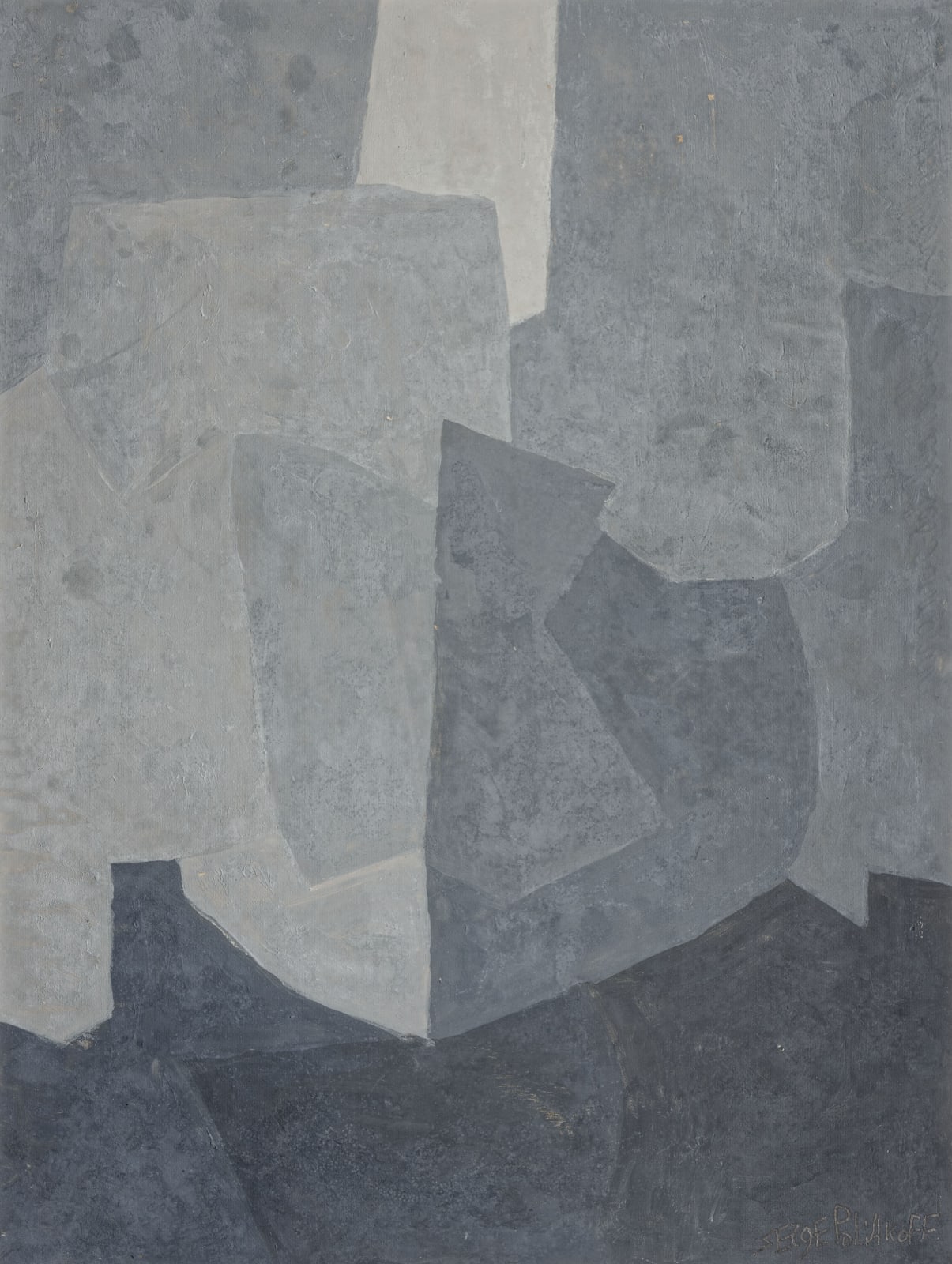
Serge Poliakoff French, 1900-1969
62 x 47 cm
Authenticity certificate of Mrs Marcelle Poliakoff dated from June 21st 1974.
Authenticity certificate of Mr Alexis Poliakoff dates from July 1st 2023.
Provenance
Galerie Bourdon, Paris,
Mme Jacqueline Lequesne Delafontaine 1964
Private collection, Paris, by descent from the above.
Literature
A.POLIAKOFF, Serge Poliakoff catalogue raisonné 1955-58, vol II, Paris, 2010, repr. P 239, n°58-50
Serge Poliakoff’s works are composed of simple and juxtaposed shapes painted as flat tints of pure color, their free arrangement gets rid of the geometrical rigor, refused by the artist’s lyrical personality.
Born in Moscow, the artist fled Russia after the 1917 revolution, he settled in Paris where he studied under Othon Friesz, a former Fauvist who influenced the young artist’s awareness of color. His friendship with Robert and Sonia Delaunay confirmed this interest. By the 1950s, he had fully abandoned the use of outlines. Instead, he encouraged his colors to guide his geometric tapestries.
In our composition painted ca. 1958, shades of blue and grey shapes are harmoniously working with each other; they are separated but intrinsically connected, in a remarkable compositional balance. Poliakoff is looking for an intelligent balance that would lead to what he calls “the absolute silence” (le silence absolu). He aims to bring the viewer to a realm of spirituality, meditation, and contemplation.
Over the following decade, Poliakoff was catapulted into acclaim. By the mid-1960s, he was one of the most celebrated painters of his generation.
Poliakoff’s practice was underpinned by a rigorous interrogation of color, but he also believed that ‘a form should be listened to when it is seen’ (S. Poliakoff, quoted in Polikakoff, exh. cat. Galerie Melki, Paris 1975, p. 13). Although color dictates the contours of his work, Poliakoff never forsook formal considerations, and his paintings revel in their chromatic structures, evincing a vivid and material tonality.
He explored the infinite possibilities and variations of arranging and rearranging these shapes on the picture place, like a puzzle, playing with outlines, colors, and proportions, until he arrived at an internal harmony between the elements, just as orchestral musicians tune their instruments to perfect their pitch.
